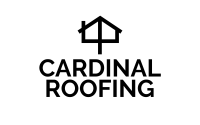Another rooftop is expensive speculation with commonsense and tasteful ramifications – the rooftop is your home’s most significant assurance against downpour, snow, and nature’s components. The rooftop can likewise fundamentally affect the allure of your home according to expected purchasers.
This aide will assist you with settling on an educated choice with regards to re-material, regardless of whether it’s adding another layer of material to the current rooftop or removing and supplanting the old rooftop.

Seven Signs You Need a New Roof
Here are the markers that your rooftop ought to be re-shingled or supplanted to keep up with your home’s protection against the components:
- Shingles are worn: Are there such large numbers of the shaded granules gone that your rooftop seems as though it has uncovered spots? While the shingles may in any case be keeping dampness out, an absence of intelligent granules permits abundant heat into your home, raising the temperature inside your home and expanding your cooling costs. Moreover, when uncovered, the fundamental black-top will before long dry out and break, and afterward, your rooftop will be defenseless to spills.
- Shingles are measured and twisted: This issue looks terrible, however more significantly, it implies wind-driven water and dampness can undoubtedly get under the shingles and into your rooftop deck where it may cause holes and decay.
- Shingles are broken: The broken regions aren’t as expected redirecting water and dampness from the rooftop deck under, and henceforth the danger of holes and inevitable water harm goes far up.
- Your neighbors are getting new rooftops: This is more than “staying aware of the Joneses.” When homes worked about a similar time as yours are being re-roofed, your rooftop is presumably about due.
- You’ve encountered different releases: Your rooftop is a whole construction, in addition to the shingles. Deck paper/underlayment, blazing, ice and dampness boundary in valleys, starter shingles, vent stack boots, and different parts are important for a whole material framework. As the rooftop ages and a few of its parts or areas come up short, the rooftop ought to be supplanted.
- The rooftop has encountered significant harm: If more than about 35% of the rooftop will require maintenance because of wind or hail harm, then, at that point, the most financially savvy choice may be to supplant it by and large. The fix is costlier for every square foot premise since it is additionally tedious to coordinate new shingles into the current rooftop “to a great extent” than to introduce them over the whole rooftop. Besides, a blend of old shingles and new will not look awesome.
- Your rooftop looks awful: Cosmetics and style do make a difference to property holders and possible purchasers. On the off chance that your rooftop is worn, has green growth staining that will not tidy up, or has patches of greenery on it, boosting its appearance with another layer of shingles will have an exceptionally decent effect.
If none of these motivations to get another rooftop to apply, you’re likely done here! In case you don’t know about your rooftop’s condition, recruiting a home reviewer or material worker for hire to examine it very well may be a safeguard measure before a rooftop disappointment and the broad and costly harm it can cause. The roadside assistance app won’t help you with roofing problems but it will be useful while you are on your way to get auto body services in Glendale.
Would I be able to Put Another Layer of Shingles on My Roof?
All-inclusive construction standards consider up to two layers of shingles on a rooftop, yet there are times it is smarter to remove the single layer and start new:
- There is proof of a rooftop deck harm like weaknesses, hanging or critical releasing that should be fixed
- The blazing around smokestacks, dormers, or an upper story is free and additionally permitting spills, so it should be supplanted
- The primary layer is included dimensional shingles with a prominent, so a subsequent layer may seem uneven
The consolidated layers would be excessively weighty for the rooftop structure, an issue in regions with substantial yearly snowfall and when extremely substantial shingles (300+ pounds per square) are utilized.
The rooftop decking is the layer of compressed wood or O.S.B. nailed to the supports or rafters. Rooftop decking is commonly 7/16″ and comes in 4’x8′ sheets. In case you’re detaching old material, the roofer can search for harm that should be fixed once the deck is uncovered.

Rooftop deck prep and fix
In case you’re adding a second layer of shingles as opposed to detaching the old ones, then, at that point, a project worker or assessor ought to:
- Walk the rooftop to feel for supple or flexing regions that demonstrate decayed or broken rooftop decking
- Search for regions where material nails are pulling out, a sign the wood underneath is delicate and will not hold the nails safely
- Analyze the underside of the rooftop deck from inside an upper room, where conceivable, to search for harm or staining brought about by spills
- Search for form or decay on the underside of the rooftop deck showing that dampness levels in the loft are high because the upper room isn’t as expected vented, an issue tended to later in this aide
At UIT institute you won’t learn much about construction or rooftops, but you can learn valuable high-paying IT skills.
